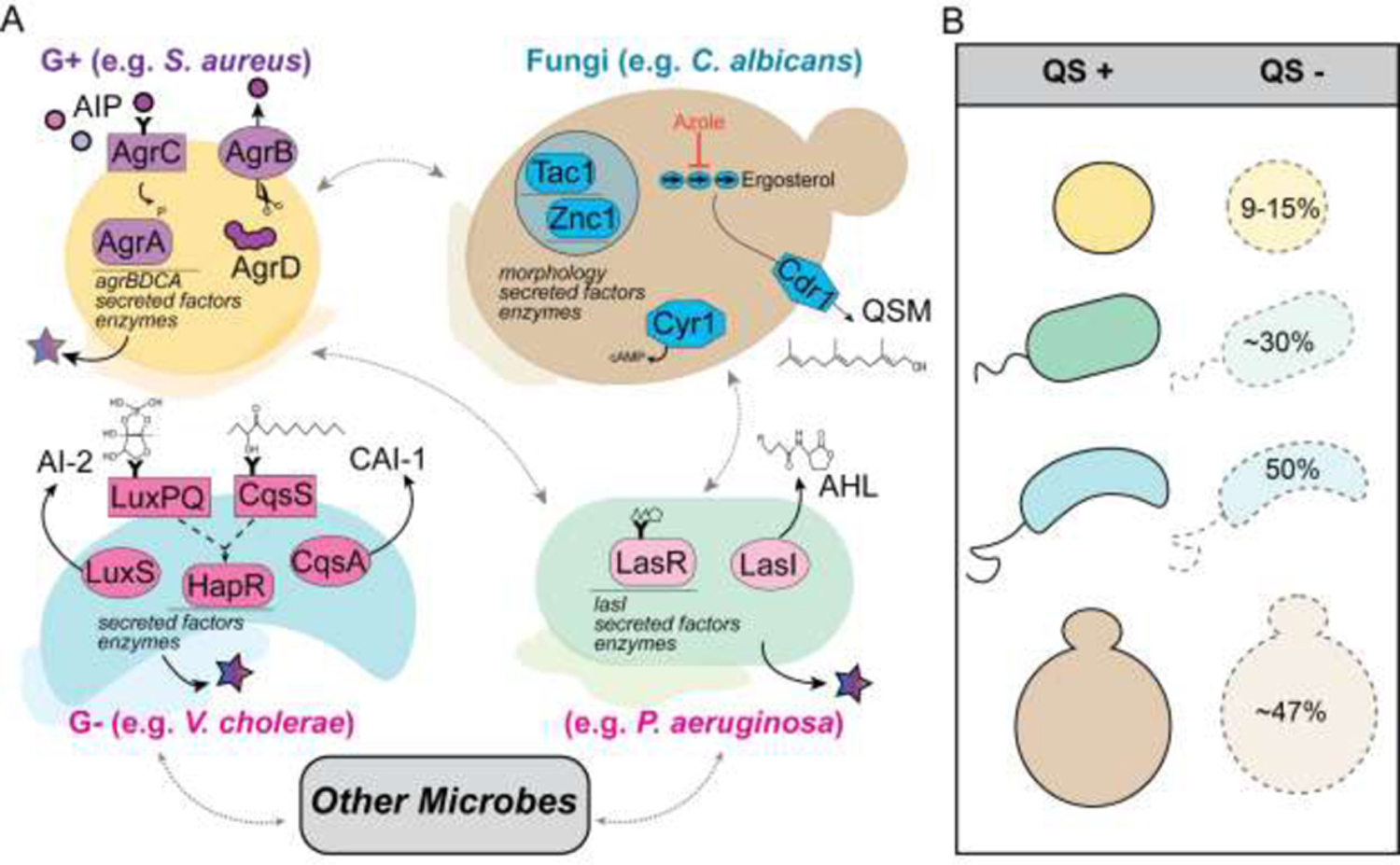Figure 1. Quorum sensing (QS) mediates microbial interactions between gram positives (G+), gram negatives (G−), and fungi.

A. Diffusible autoinducers signal within and between species to regulate biofilm formation (colored base) and the production of secreted factors and enzymes (stars) which can modulate the extracellular milieu. Key elements of QS systems in Staphylococcus aureus, Candida albicans, Vibrio cholerae and Pseudomonas aeruginosa whose function is implicated in microbial interactions are shown. Shapes indicate protein activity: histidine kinases, rectangles; transcription factors, rounded rectangles bound to thin line of DNA; and enzymes involved in the synthesis or modification of the autoinducer signal, ovals. A small “Y” amended to a protein structure indicates that it binds the autoinducer. Structures for the autoinducers AI-2, CAI-1, acyl homoserine lactones such as 3OC12HSL, and the QS molecule (QSM) farnesol are shown. Autoinducing peptides (AIPs) from S. aureus and other species are shown as circles with color indicating species specificity. Dashed black lines indicate indirect activity, and dotted grey lines depict microbes with characterized interactions. B. In the species shown in A, strains with non-functional components of the QS system are frequently identified. In S. aureus (yellow) 9–15% of strains have dysfunctional Agr [63,64], in P. aeruginosa (green) roughly 30% have lasR loss-of-function alleles [65], in V. cholerae (blue) as high as 50% of isolates show defective quorum sensing [8], and although less clear in C. albicans (tan), roughly 47% of isolates show reduced farnesol production [66].
